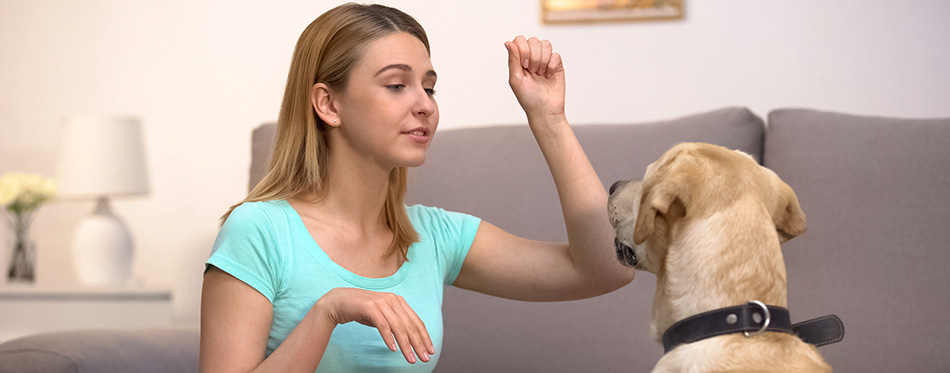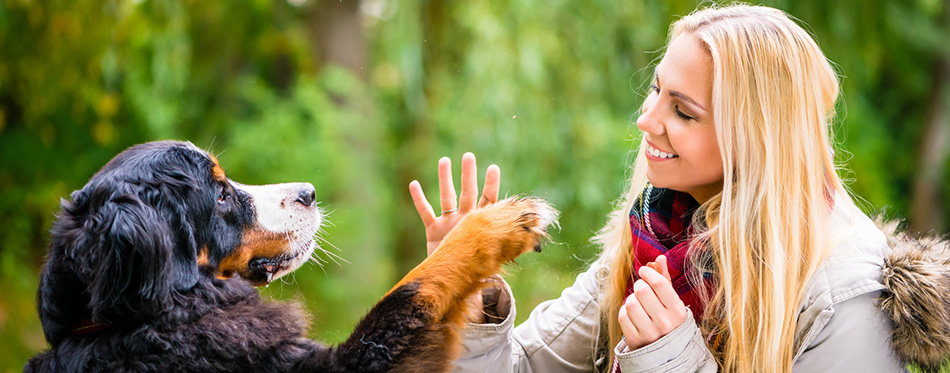A well-behaved dog is a pleasure to be around, however, good behavior does not come naturally, it requires time and effort. In the pack, appropriate behavior is taught to puppies from an early age by the adults and inappropriate behavior is corrected by more dominant dogs.
In the home environment, you are the pack leader, the dominant adult, and it is your responsibility to teach your dog what is appropriate behavior in the home environment. Using the right approach from an early age is the best way to get lasting positive results, however, you can still be successful with older dogs who need to be retrained to correct poor or inappropriate behaviors.
Regardless of your dog’s age or previous experience, it is important that you use a discipline method that works, and which does not injure or cause harm to your dog.

Understanding Punishment
Before exploring the effectiveness of different training methods, it is important to analyze what punishment actually means. It is a term that is often used to describe a method of discipline that is based on hitting or spanking your dog, causing them physical and potentially psychological harm.
Punishment, when considered in this way, is an aversive method of obedience training. As well as being cruel, it is also totally ineffective.
When punishment is used as part of a positive approach to obedience training then it is humane, productive, and highly successful.
Positive or constructive punishment uses disciplinary methods that reinforce the behaviors you want to encourage. Positive disciplinary methods that can be used with your puppy, or adult dog, include the following:
- Time-outs in a safe but attention free space
- Using your voice to refocus or interrupt negative behaviors
- Removing toys and favorite objects
- Removing your attention
These and other positive disciplinary methods are most effective when applied while your dog is involved in the negative or unwanted behavior. This means being watchful; applying any of these methods after the fact only serves to confuse your dog, making it unclear what they have done wrong.
Check out our guides on Dog Whistles and Dog Agility Tunnels for more info.
The Effects of Hitting or Spanking Your Dog
There are numerous reasons why you should not use aversive punishment methods such as hitting. The most obvious reason is that it does not work. Consider what happens if you use such a method when your young puppy pees on your rug.
You may also like our article on Pet Stain Removers.
Your puppy pees on your favorite rug, you smack your dog and shout NO. Your puppy tucks their tail between their legs and most likely runs off. They understand that you are upset or angry and that they are hurt and scared, but they are unsure why. Is it because they peed in front of you or because they peed on the rug? If they pee on another rug but don’t get seen, then they don’t get punished, so what they learn is not to pee in front of you for fear of being hurt again.
If instead, you take your dog outside, wait for them to pee and give them lots of praise and attention, they know that peeing in front of you is good. Then, when they pee in front of you in the home, you remove your attention. They don’t get the attention they crave for peeing inside or where you can’t see them, so over time, they realize that the only way to get attention is to pee outside where you can witness and praise them.
Hitting your dog, even as a form of punishment, can also be detrimental to your relationship with them. Using force of any kind to discipline them can lead to the development of behavioral issues. These issues can include:
- Fearfulness
- Insecurity
- Running away or hiding from you
- Aggression
Hitting your dog does not address the problem or help to correct behavior; it teaches your dog that you are a source of pain. Hitting or spanking is also actually likely to make the behavior that you were punishing worse.
Your dog does not understand why they are being hit or why their pack leader is inflicting pain. Taking this course of action reduces their trust in you, they no longer know what to expect when you approach them; an outstretched hand could mean they are going to be fussed, but it could also mean they are going to be hit.
It is this insecurity that can lead to some dogs reacting aggressively. This aggression can be shown towards their owner or another individual that approaches in a similar way. If the dog is so insecure that they have become afraid of people, they could act aggressively to any approach for fear that the person could mean them harm.
Hitting or spanking your dog is only one form of aversive punishment. Other types of aversive punishment that should be avoided include shaking your dog, pushing them to the floor, shouting (aggressively and loudly rather than using your voice to refocus), and reinforcing your dominance by looming over them.

How to Discipline a Dog
Dogs learn new things quicker when they are younger. The same is true of routines and acceptable behaviors. It is easier to teach these to a puppy than it is to break bad habits and retrain an older dog. So, the earlier you start with your positive reinforcement, the quicker your puppy will learn how to behave appropriately.
It is important to understand that puppies are full of energy and a desire to explore the world around them. Everything is full of wonder and excitement and they are unable to distinguish which toys are theirs, where it is ok to go to the toilet, and what they can and cannot safely eat, drink, or chew.
It is your responsibility as their pack leader to teach them all of this, as well as providing the experiences and skills they require to become well-behaved and well-socialized dogs.
And, the best way to achieve this is through rewarding the behaviors you want to encourage. Praise your puppy when they are chewing their toys, when they go to the toilet outside, when they don’t make a grab for your food, shoes, or fingers.
If you do need to use a positive discipline, then ensure you apply the discipline while your dog is involved in the behavior you want them to stop. If they are starting to chew an inappropriate object, use your voice to interrupt the behavior. Take the object away and remove your attention. After a short while given them one of their toys and praise them when they begin chewing it.
Getting attention for chewing the right thing and losing your attention/affection for chewing the wrong things helps your dog to remember which objects are which. However, it is important to remember that young puppies have very short attention spans, so do not leave too long before each step in the process.
It is important to be consistent in your approach to training and discipline. If you allow a behavior one day and stop it the next, your dog will become confused and unsure how to gain the praise and affection they want.
For more options, check out our detailed reviews of the best dog chews and best dog anti chew spray.
While you do not want to slip into domineering behaviors that could become aversive, you do need to be in control. When training your dog, they should know you are in charge. This helps them to have confidence in you. If you are not confident in the commands you give, the rules you set, or even in how you hold the leash when walking, your dog will pick up on this and lack confidence in your ability to lead the pack and keep them safe.
Developing a well-behaved and well-socialized dog takes time, effort, and patience. Getting it right while your dog is young helps to prevent behavior issues when they are older. However, training and discipline is not a one-time activity, it is something you need to reinforce throughout your dog’s life. If you stop praising your dog for weeing outside, not jumping at visitors, or playing with the right toys, they will think these things no longer matter.
Keep on top of your dog’s behavior by reinforcing positive behaviors frequently and lots of physically and mentally stimulating activities. Keeping them stimulated and busy reduces the chances of them becoming bored and looking for ways to entertain themselves that could lead to new behavioral challenges.

